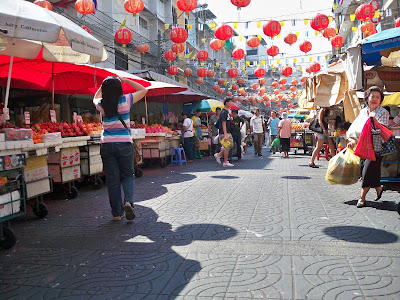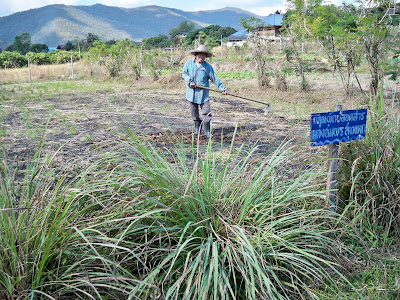I have been in the States for less than a week, and thus my
experience in Thailand is still a very large part of my daily thoughts (heck,
my experience in India is still a very large part of my daily thoughts). Processing experiences abroad seems to take a
long time and I would not be surprised if it was a lifelong process. Thus, I do believe that my reflections on my
travels in Thailand will develop and change over time. Here are some things I have been thinking
about in the past few days.
1. I learned a lot
about ways to approach life changes, especially death, in ways other than
sadness or anger. I heard many Thai
people talk about taking life day by day, without regretting the past or
worrying about the future. I also saw
that when someone died, people did not just completely shut down with
mourning. A funeral was not just a place
to cry but also to celebrate and enjoy the company of a community. I think that Thai people had a nice balance
of emotions and were much more accepting of life changes. They seemed to “go with the flow” much better
than we do here in the States, where we will stop at nothing to retain our
American lifestyle of valuing youth and high consumption.
2. This second point relates to the emphasis of taking life
day by day without regretting or worrying.
I think it also has to do a lot with different perception of time: the
idea of schedules, due dates, and plans seem are not as rigid in the Thailand
that I experienced. Thailand seemed like
a country where stress did not exist. I’m
not sure if this was me oversimplifying (it probably was), but at least the
notion of anxiety was nowhere near as prevalent as it is in the American society
that I inhabit. Since I have returned I have
tried to live without a constant feeling of avoiding stress, being stressed, working
in a hurry, or focusing on deadlines. My
question is this: Can I live without a concept of stress at The College of
Wooster, an environment which I have always perceived as very high-stress
because of how hard I expect myself to work?
Some people think that at least a little bit of stress can be very
helpful in achieving one’s goals. So
far, I am feeling very good with my “no stress” attitude and I seem to be doing
alright with just taking things as they come.
Will it survive?
3. Can the way we approach spirituality and religion in the
US be changed? I have seen how
intertwined and fluid spiritual life is with the rest of society in other
nations and think that this can really enhance one’s quality of life. It may even, if practiced correctly, lead to
a more ethical life. (However, as I have
seen in Thailand, religion can often be used as a form of oppression.) In Thailand, I really appreciated how
spirituality, faith, religion, etc. did not need to be put into boxes like it
does in the United States. It bothers me
here how much emphasis we put on separating church from state (even if that
doesn’t really exist), how we judge people based upon their religion, and how
we say that people who aren’t part of a specific religion are not religious people. Why is it so important that we are a
Christian or a Muslim or a Jew or an Atheist?
And why is it so important that we often seem to keep our own faith practices
hidden or separate? After all, we are
all human beings. Even if we practice
different forms of spirituality, we could still at least talk about them or use
them for the common good. I saw some
examples of these practices in Thailand, such as in HIV/AIDS work. I also saw the acceptance of many forms of spiritual practice in Doi Lan, the Li Su village.
4. Thailand appeared
to be a very hierarchical country, with so much emphasis placed on the king and
also one’s own personal status. Despite
how Thailand is often portrayed in international media, it did not seem like
any more of an unstable nation than any other country I have visited or lived
in. I learn a lot in my sustainability
classes about how development is best when it is a grassroots, bottom-up
initiative. So what about the case of
Thailand, which appears on the surface at least to be the exact opposite? (Note that I am someone who is a big advocate
for bottom-up development, and even I am asking this question. Perhaps everything is not so black and
white.)
It’s still hard for me to write even these comments down
because I feel unsure of what I write about.
In the end I leave with more questions that I started with. However, I am very thankful to have had this trip. I am especially very grateful for getting to
meet and learn from many unique people while in Thailand. My weekly Asian and Asian American Feminist
Theology course starts tomorrow night and so I get to continue
questioning. Thus, I hope to continue to
write follow-up posts on topics such as those that I touched on above. (Also, a sneak peak at my next “abroad”
experience: driving from Tucson, Arizona to Nogales, Mexico with a BorderLinks
educational experience in March.)
 |
| Here's to feeling stress-free in Thailand and the US. (Hopefully that also goes for my Li Su cat friend.) |








































